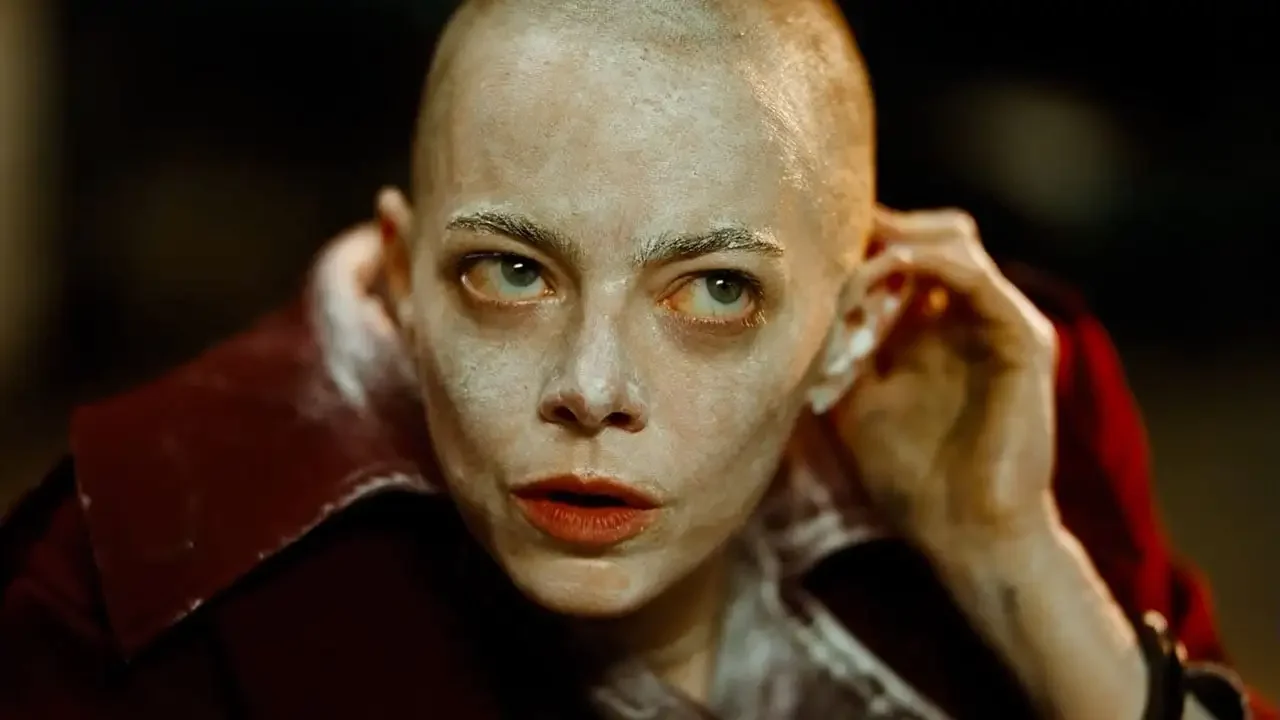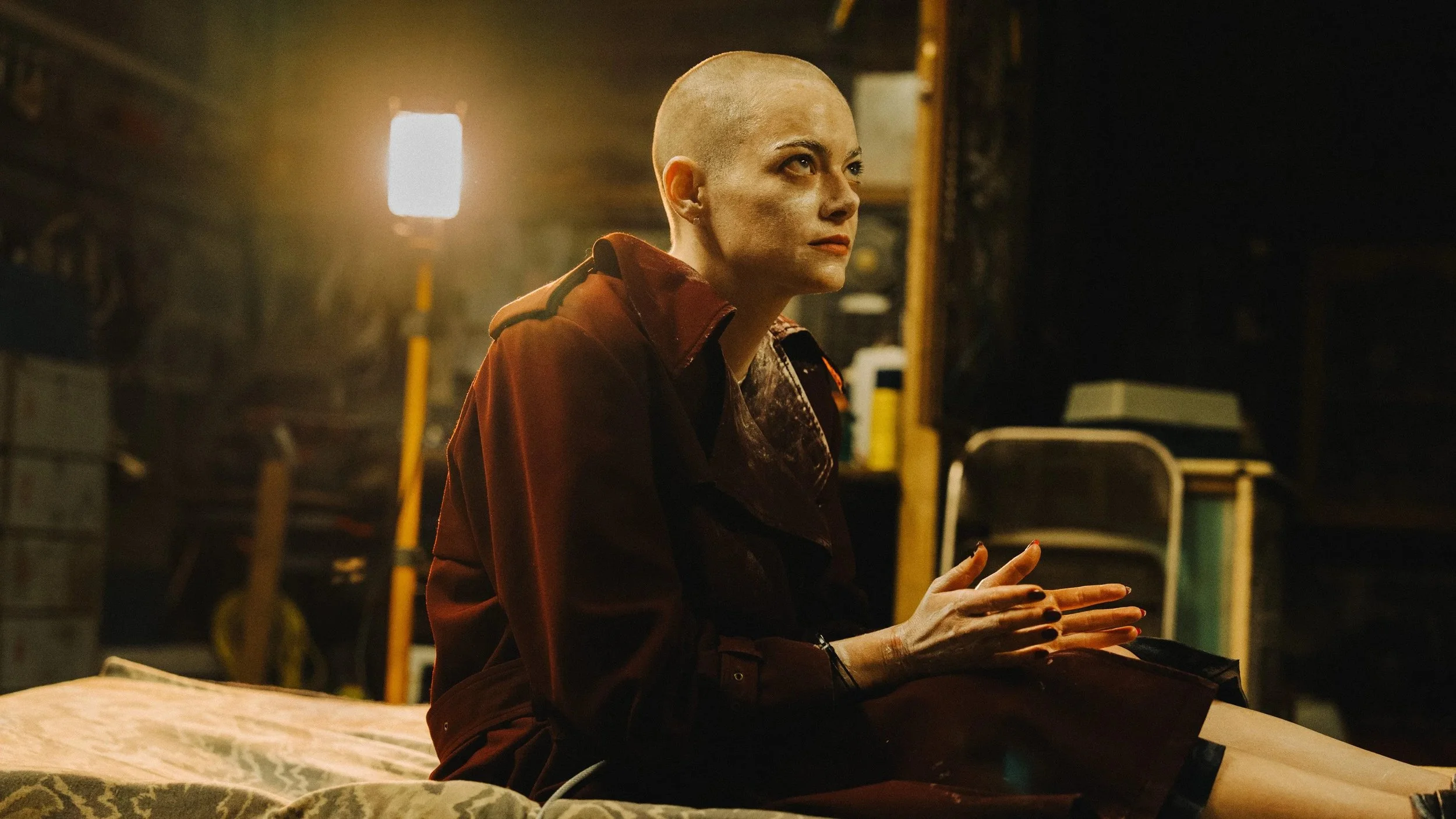‘Bugonia’ Review: Yorgos Lanthimos' Admirable Reinterpretation of a Superior Korean Film
Yorgos Lanthimos remakes Jang Joon-hwan’s Save the Green Planet! with Bugonia, and the results aren’t as successful as his previous collaborations with Emma Stone, despite its staggering VistaVision photography and solid turns from its lead stars.
The fourth collaboration between Yorgos Lanthimos and Emma Stone, following The Favourite, Poor Things, and Kinds of Kindness, ‘Bugonia’ sees the Oscar-winning actress play Michelle Fuller, the CEO of a high-placed pharmaceutical company who gets kidnapped by two conspiracy-obsessed cousins, Teddy (Jesse Plemons) and Don (Aidan Delbis). Of course, astute viewers know that Lanthimos and writer Will Tracy’s premise is not original. Instead, they are retreading Jang Joon-hwan’s bonkers Save the Green Planet!, in which the two kidnappers suspect this influential CEO is an alien from the planet Andromeda looking to invade Earth.
Lanthimos and Tracy keep the bare bones of the story intact. However, significant changes are made to the relationship between the kidnappers and the CEO (instead of a husband-and-wife duo, we follow cousins), while Stone plays a gender-swapped version of the character initially portrayed by Baek Yoon-sik. The parallel story of a detective attempting to track down the abductors has also been completely removed, with a stronger focus on Teddy and Don trying to get Michelle to admit that she is an alien who will make contact with the Emperor of Andromeda on the day of the lunar eclipse.
Lanthimos and Tracy repurpose the detective storyline by integrating a sheriff (played by Stavros Halkias, the comedic counterpoint of an otherwise bleak picture) who suspects something wrong occurring in Teddy and Don’s household, in the wake of Teddy’s mother, Sandy (Alicia Silverstone), being put in a coma after a drug trial, brought upon by Michelle’s company, goes horribly wrong. There’s a personal motive behind the kidnapping, since the company is the reason Teddy’s mom may not wake up. Yet the protagonist also holds firm beliefs that aliens have been instrumental in the collapse of society as we know it.
The climate has become drier, affecting honey production, the primary source of income for Teddy, who also works at a factory run by Michelle’s company. There’s a great scene at the top of the picture, where the CEO says workers are now free to leave at 5:30 pm —“unless they’ve still got work to do” — creating a loophole that many companies use to overwork and underpay employees. CEOs fill their pockets out of the exploitation of their employees, who seldom get benefits or time off to rest (as illustrated by a worker who, despite injuring her arm, must still keep going to make ends meet). Is this Yorgos Lanthimos’ Do Not Expect Too Much from the End of the World? One could think so, for a while, at least.
This culture of work is all too prevalent in a society that doesn’t value the human element of employment and would rather treat its employees as mere numbers than foster a humane and respectful environment. Stone portrays this bloodthirsty CEO on a quest to change the world, yet with no desire to improve the conditions of the people who work for her, as long as she keeps most of the profits. It pisses Teddy off more than anything occurring with his mother, whom he believes will get better, despite the scientific consensus essentially declaring her dead. If you’ve seen Save the Green Planet!, you know how this story ends.
Another significant difference between Joon-hwan and Lanthimos’ picture is that flashbacks are visualized in black-and-white, stunningly photographed in VistaVision by cinematographer Robbie Ryan. In fact, this could be Lanthimos’ best collaboration with the Irish director of photography, who has worked with him since 2018’s The Favourite (which was also his first partnership with Emma Stone). Instead of the camerawork and dynamic cutting always being in-your-face, almost as if, in Save the Green Planet!, Joon-hwan wants to bamboozle you at every turn visually and aurally, Lanthimos’s approach to Bugonia is far more responsive to his sensibilities.
If you didn’t like any of his previous movies, chances are Bugonia won’t do much to move the needle in a more positive direction. That said, it still feels shocking to see how contained this remake of Save the Green Planet! is compared to how Joon-hwan twisted the story in a thousand different directions, and wasn’t afraid to push many (extreme) violent buttons. There’s a lot of torture in Joon-hwan’s film, which takes a darker direction by the time it reaches its conclusion, while Lanthimos restrains himself until a reasonable hour into the movie, where he amps up the tension and eventually bathes in the most sickening violence of his career.
That’s also when I began to check out, barring a crowd-pleasing, physically comedic kill occurring near its climax that is so surprising one kinda has to respect it. As much as Lanthimos and Tracy effectively build a sense of dread, punctuated by the year’s loudest score from Jerskin Fendrix (his weakest musical contribution to a Lanthimos picture, by the way. It never fits into the film’s aesthetic, compared to Poor Things or Kinds of Kindness), most of the dialogue-heavy conversations between Teddy, Don and Michelle begin to repeat themselves and don’t really go anywhere. In Save the Green Planet!, whenever the movie had the potential chance to enter cyclical territory, Joon-hwan cuts to something else — the detective story or flashbacks with Byeong-gu’s mother.
Since Bugonia is essentially a three-hander chamber piece, mostly contained within the basement of Teddy’s home, there’s not much Lanthimos can do to spice the story up until a fairly reprehensible turn that will likely make or break your appreciation of the film. I personally found it to be of poor taste, especially in how the filmmaker treats his only autistic character, terrifically portrayed by an actor on the spectrum, who is essentially led to make a decision that makes no narrative or cohesive sense, and only serves to exploit his issues rather than turn Don into the fully-fledged character he should be.
It’s pretty contemptuous to treat him like this, especially when he’s basically an object to jumpstart the depraved section of the picture. Lanthimos’s sicko sensibilities are on full display when it kicks in, but the extreme, almost depraved violence, dilutes the overall message and blunt conclusion of Joon-hwan’s movie. People will argue that Save the Green Planet! also had plenty of violence, but it wasn’t as cartoonishly exaggerated as in Bugonia, especially since Lanthimos and Tracy don’t do much to reframe this timely story for contemporary audiences.
Still, Emma Stone has never been better collaborating with Lanthimos (she deserved the Oscar for Poor Things – argue with a wall), and her turn as Michelle Fuller continues the career-best work she has done with him ever since The Favourite. Plemons is also strong, as expected, following his work with Yorgos on Kinds of Kindness, which saw him explore previously unseen territories on screen. It’s a shame the material both actors have to work with doesn’t feel as powerful as their previous collaboration with the Greek filmmaker, but their performances are the primary reason why Bugonia doesn’t fall apart as much as it does.
Ultimately, it is Lanthimos’ weakest movie since Alps, which is pretty good considering the amount of bangers he has delivered from The Lobster onwards. Yet, even minor Lanthimos feels like a not-to-be-missed cinematic event, even if, in this case, Save the Green Planet! is a more formally – and thematically – daring picture, whose message is still heard loud and clear even twenty-two years after its release. I don’t even need to spell out to you the culprit of humanity’s demise, as you can probably glean it very easily.




